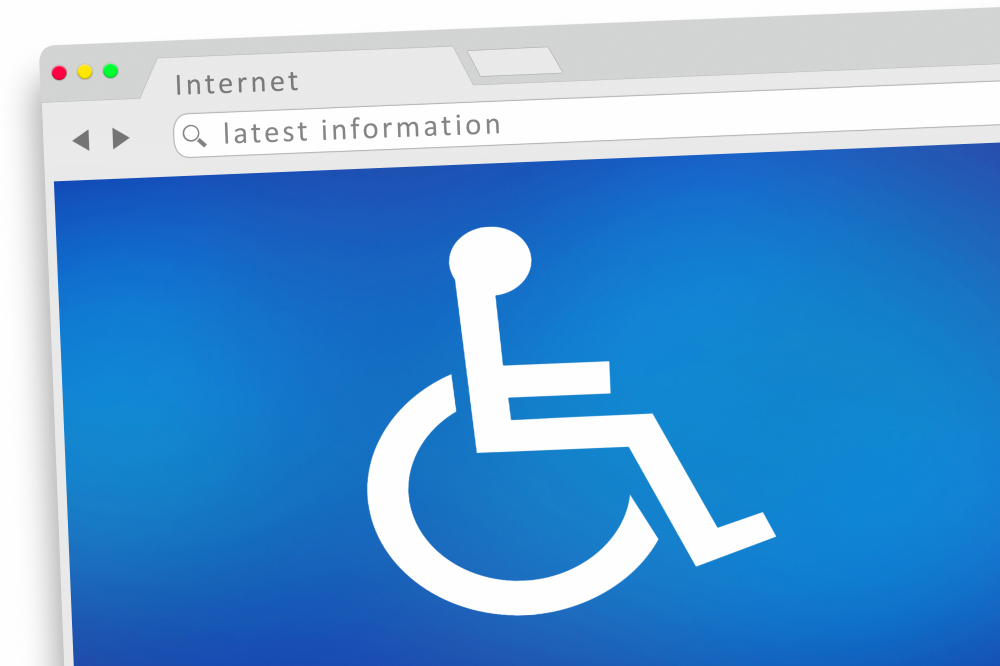By now, employers should know that the Americans with Disabilities Act (ADA) and similar state and local laws protect the employment of qualified individuals with disabilities. And while you may be aware that the same laws offer similar protections for disabled individuals’ other areas of daily living—such as education, housing, and commerce—you may not realize that these laws are being used to attack the accessibility of companies’ webpages and Internet resources.
This new area of liability is allowing crafty plaintiffs’ lawyers to feast on the unsuspecting. Are your website and e-business platforms ADA-compliant?
Background
The ADA mandates that disabled people be given equal access to goods, services, accommodations, and education as well as employment opportunities. The New York State Human Rights Division, for example, and many municipalities mandate the same obligations.
That means you may be required to provide auxiliary aids and services to ensure your communication with disabled individuals is “effective.” Over the last decade, courts have held that Title III of the ADA may apply to the websites of organizations that are considered places of “public accommodation.” As a result, companies have had to make their websites accessible to individuals with disabilities.
In 2018, there were more than 1,500 website accessibility lawsuits in New York’s federal courts, which accounted for more than two-thirds of all federal website accessibility cases filed throughout the country. Plaintiffs in such cases typically claim that a company’s website is inaccessible to them because they are visually impaired and the website lacks a screen-reader function or they are hearing-impaired and the website has an audio component.
Litigants in ADA website cases will seek injunctive relief to obtain a court-ordered modification to the website and, of course, attorneys’ fees. While many lawsuits are brought in good faith, others are launched merely to obtain a nuisance settlement, given the cost of litigation and the expense of modifications or operational interruptions. Most targets so far have been hotels and retail businesses, but employers and temporary employment agencies should be aware that they face the same exposure.
ADA Compliance
This area of the law is a complete mess. In New York and other states, neither the judiciary, nor lawmakers, nor enforcement bodies such as the U.S. Department of Justice can agree on a single standard for ADA website accommodation. The courts are also all over the place on the issue.
While the U.S. Supreme Court and the Second Circuit haven’t yet ruled on an ADA website case, there’s a split among the federal courts over whether a business or service can be a place of public accommodation if it’s operated solely online or whether the website business/service must have a “nexus” to a brick-and-mortar location.
The First and Seventh Circuits are in the minority, holding that a website alone can be a place of public accommodation. The Third, Fifth, Sixth, and Ninth Circuits require a public accommodation to be an actual physical space or have a nexus to an actual physical space.
What Now?
New York employers should understand that after its recent amendments, the New York State Human Rights Law (like the New York City Human Rights Law)—for example—is now construed broadly in favor of plaintiffs and provides for automatic attorneys’ fees when an individual prevails. Moreover, the federal district courts in New York don’t appear too concerned about whether a company’s website actually has a nexus to a physical location. That doesn’t bode well for New York companies.
In terms of a standard to be followed, the World Wide Web Consortium’s Web Content Accessibility Guidelines, or WCAG 2.0, was published in 2008 and became an ISO standard in 2012. WCAG 2.0 recently gained some attention following a 2017 Florida website accessibility case.
Your IT consultant may use a different standard, but regardless of the metric you use, you may want to explore whether your website is ADA-compliant and, if not, what the cost of becoming compliant is.
In the end, it’s a matter of your risk tolerance in light of the rise in website accessibility litigation. Of course, if your company has already received a demand letter or a notice of litigation involving an ADA website compliance matter, you should contact counsel immediately.
Theresa Levine, an attorney with Coughlin & Gerhart, LLP, can be reached at tlevine@cglawoffices.com.

